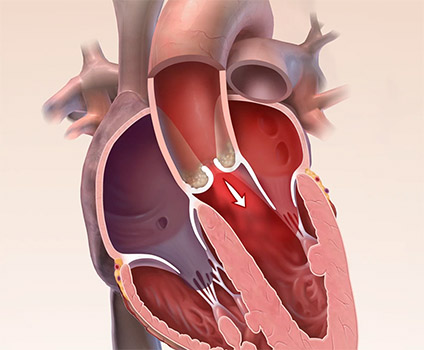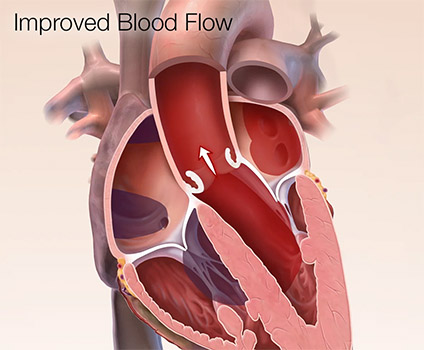
Aortic Valvuloplasty
Stenotic aortic valve disease can require a procedure called aortic valvuloplasty. Calcific aortic stenosis is shown here. The aortic valve is narrowed or stenotic and blood cannot flow easily into the aorta, causing pressure to build in the left ventricle. This can damage the heart muscle over time.
During aortic valvuloplasty, a guide wire is inserted through a small incision in the thigh and up the aorta and through the stenotic valve. A balloon catheter is then passed over the guide wire. This balloon is inflated to open the narrowed valve. The balloon catheter and guide wire are removed, leaving the valve widened and allowing blood to flow freely out of the heart. There is often some degree of backward leakage through the valve, and many patients will require later intervention.
Figure 1: Calcific aortic stenosis can require treatment.
Figure 2: Balloon catheter expanding to open the narrowed valve.
Figure 3: Backward leakage (regurgitation) can result from the procedure.
Figure 4: Outward blood flow is improved after aortic valvuloplasty.
Visit Michigan Heart Group for more information.



